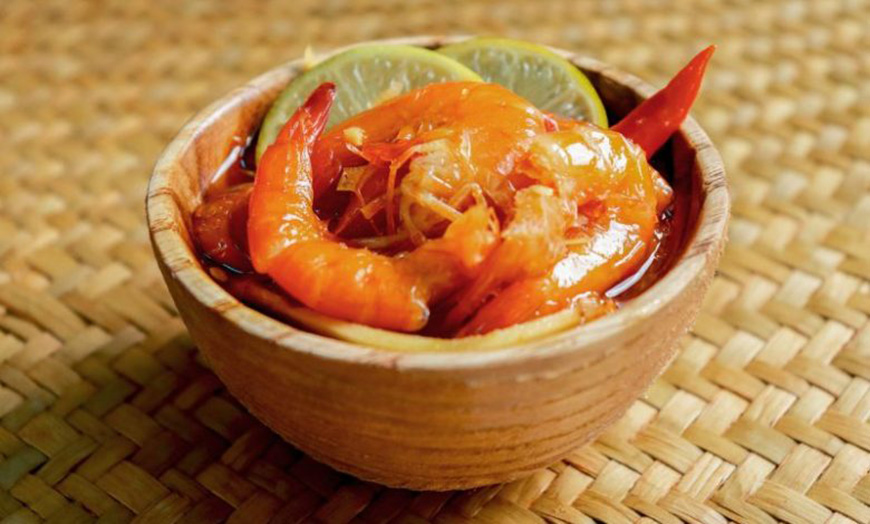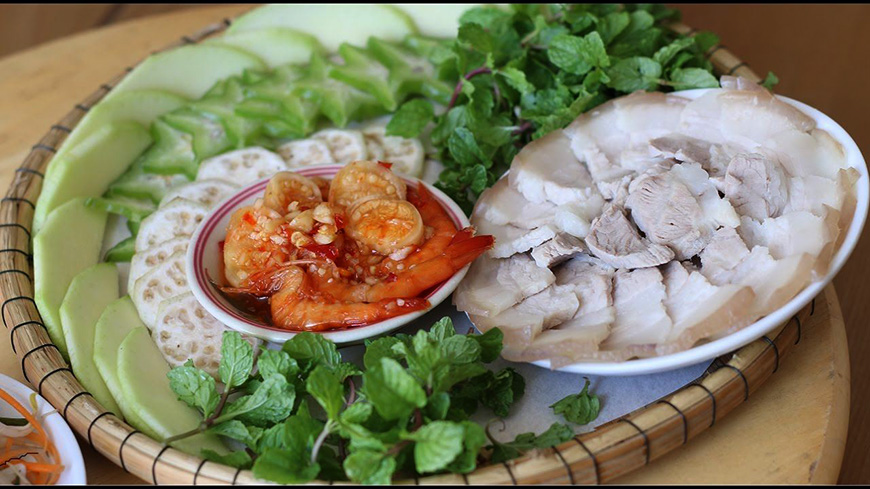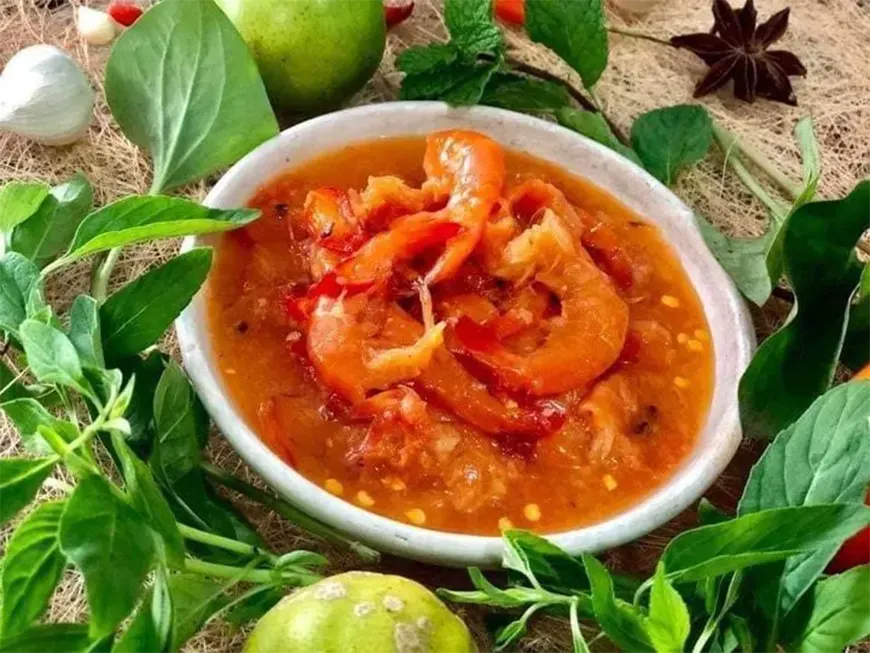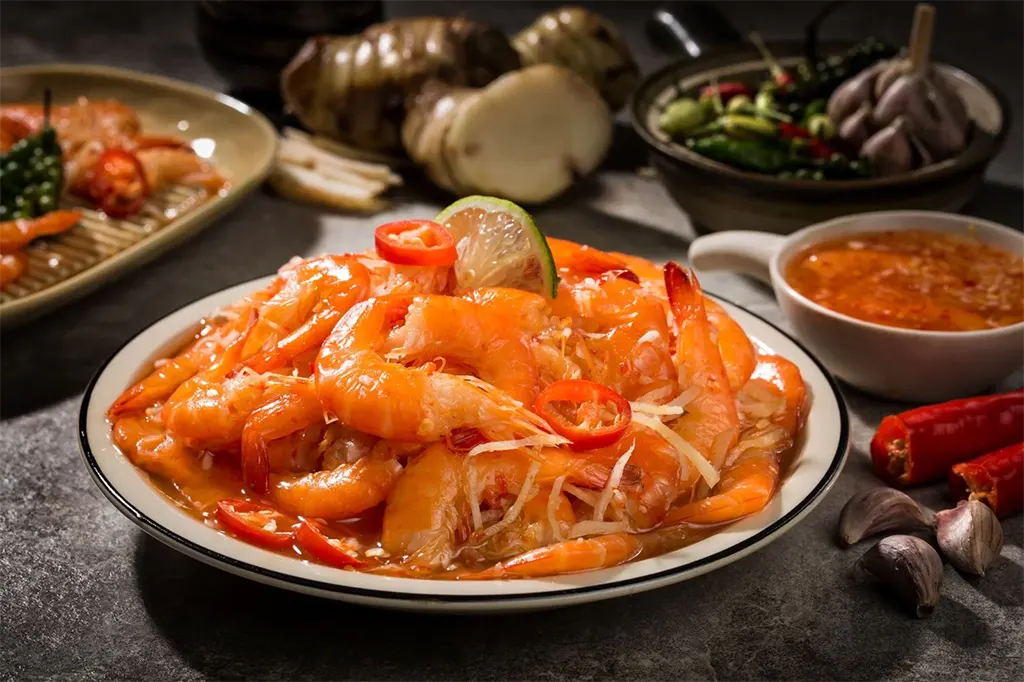A fermented treasure from Northern Vietnam
Tôm Chua, a culinary specialty emblematic of the province of Bắc Kạn, is particularly cherished around Lake Ba Bể and intimately linked to the Tày ethnic group that predominantly inhabits this region.

Origins and tradition
Although its exact origins are difficult to pinpoint precisely, Tôm Chua is deeply rooted in the culture and natural resources of the Tày people living around Lake Ba Bể. For a long time, these mountain inhabitants have developed the art of fermenting freshwater shrimp (tôm) and fish (cá) to create typical dishes, making the most of their environment rich in aquatic resources. Over time, they have combined natural fermentation with local ingredients such as sticky rice (nếp nương), galangal (riềng), garlic, and chili, giving Tôm Chua its characteristic flavor: a subtle harmony of sweetness, acidity, and slightly spicy notes.
Ingredients, preparation, and characteristics
Tôm Chua is a fermented dish made from small freshwater shrimp from Lake Ba Bể. The quality of the shrimp is crucial: they must be fresh, of uniform size, plump, and with short antennae. After being cleaned and stripped of their antennae, the shrimp are mixed with steamed sticky rice and a natural ferment to initiate fermentation. Crushed spices like garlic, chili, and galangal are also incorporated into the mixture. The whole mixture is then placed in tightly closed jars for fermentation for about 7 to 10 days, depending on the climatic conditions.
Tôm Chua from Ba Bể stands out for its delicate balance of flavors, offering subtle sweetness, acidity, and spiciness, with a natural and authentic taste that sets it apart from marine or Huế versions. It is appreciated for its finesse, rich aroma, and pleasant texture.
Nutritional value and accompaniments
Beyond its taste, Tôm Chua is an interesting nutritional source, rich in proteins, vitamins, minerals, and antioxidants beneficial for muscular, cardiovascular, cerebral, and immune health. Its traditional fermentation could also promote digestion. However, its cholesterol content and potential allergenicity should be taken into account.
Culinarily, Tôm Chua is often served with boiled meats such as pork knuckle or belly, and fresh vegetables like sour starfruit (khế chua), green banana, and aromatic leaves like đinh lăng (a local plant). It is also traditionally enjoyed with rượu ngô, local corn alcohol, for a complete taste experience typical of the region.

A cultural symbol
More than just a dish, Tôm Chua is a strong symbol of the cultural identity of the Tày people of Bắc Kạn, an artisanal product passed down from generation to generation, closely linked to the surrounding nature and mountainous way of life. Its preparation requires precise craftsmanship, especially in the choice of ingredients and mastery of fermentation, making it a local gastronomic treasure and an essential element of Bắc Kạn’s culinary heritage.
But now, it’s time to sit at the table…

Tôm Chua “Inspired by Bắc Kạn”
Western adaptation
Ingredients:
- 250g of peeled raw small shrimp (fresh or good quality thawed)
- 150g of sticky rice
- 50ml of rice vinegar (or a mixture of apple cider vinegar and a little sugar)
- 1 tablespoon of sugar
- 1-2 fresh red chilies, finely chopped (to taste)
- 2 cloves of garlic, finely chopped
- 2 cm of fresh ginger, grated (or galangal powder if available)
- 1 tablespoon of nuoc mam (fish sauce)
- (Optional: a few thin slices of starfruit for the marinade, if available)
Preparation:
- Rice cooking: Cook the sticky rice by steaming or boiling as directed on the packaging. Let it cool.
- Marinade preparation: In a bowl, mix rice vinegar, sugar, chili, garlic, ginger (or galangal), and nuoc mam. If using starfruit, add the slices.
- Mixing: In another bowl, gently mix the raw shrimp and cooled sticky rice.
- Marinating: Pour the marinade over the shrimp-rice mixture and gently mix to coat all ingredients.
- “Fermentation” (simplified): Let it rest in the refrigerator for at least 2 hours (or ideally 4-6 hours) for the flavors to blend. This does not replicate fermentation but gives a tangy and flavorful taste.
- Serving: Serve chilled, accompanied by herbs (mint, coriander), raw vegetables (cucumber, grated carrot), and optionally rice cakes.

